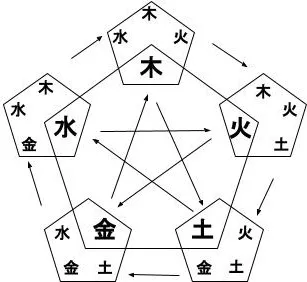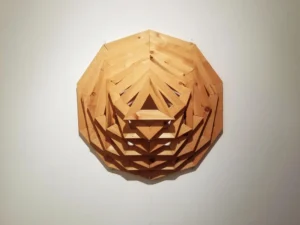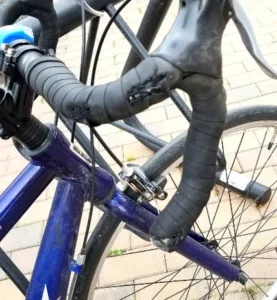Call to Book
Martial Arts & Healing Arts
As long as both have existed, martial arts and healing arts have had an important relationship. The roots and modern branches of these arts may appear separate, but they are deeply connected. This is an essay intended only to introduce aspects of the profound inter-relatedness of martial and healing arts. Coexistence for over 2 millennia has brought about many overlaps, which we will attempt to touch on here.
Old style martial arts training was not just a hobby or casual activity. For practitioners it was and for some still is a way of life. That being said, they needed to be created as whole systems. Training combative martial arts exclusively is possible for a young person, but is not sustainable as injury and repetitive strain accumulates. Martial and healing arts have had to be combined for practitioners to maintain their well being into old age. Similarly, martial arts have been practiced by eastern health practitioners to maintain personal health and also support the mindset and personal control needed to manipulate the energy of others effectively. In modern day practice, martial arts are used mostly to exercise body and mind, as a spiritual practice, to train for preventative self defense, and for fun or sport. Martial arts are still used widely for the bodily, mental and spiritual benefits they were designed for.
Traditional Chinese Martial Arts use many of the same theories implemented in Traditional Chinese Medicine, including Jing Luo (meridians and branches), Wu Xing (5 elements), and Herbal Therapies. However as these systems are different the theories are used with different intention. Acupuncturists/Acupressurists manipulate the energy of the body by stimulating acupoints, using the guiding ideas of Jing Luo, Wu Xing , Zang Fu (Yin Yang Organs) theory, with personal and common experience. Similarly, Martial Artists use their understanding of Wu Xing, Jing Luo and acupoint functions along with personal experience to manipulate their own energy, and the energy of their opponents or training partners.

Wu Xing (5 Elements Chart)
Wood (木) – Liver + Gallbladder, tendons + ligaments
Fire (火) – Heart + Small intestine, Blood + vessels
Earth (土) – Spleen + Stomach, Muscles
Metal (金) – Lung + Large intestines, Skin + Mucous Water (水 ) – kidney + Bladder, Bones + Marrow outer pentagonal cycle = generating cycle (wood → fire → earth → metal → water) inner pentagram cycle = controlling cycle (wood → earth → water → fire → metal)
As it is so ingrained in the worldview of traditional eastern sciences, Wu Xing (5 elements) particularly is often found in traditional Chinese Martial Arts. Taijiquan uses Wu Xing in relation to stepping direction and intention, Xingyi uses Wu Xing to classify it’s martial forms. Popular animal forms and fighting styles such as Mantis, Tiger, Crane, etc. represent the animals, but also the elements attributed to these animals. When sparring, 5 element controlling cycle theory is used to overcome opponents. eg. If the opponent has chosen a fiery style, one may choose a fluid watery style to exhaust and control it. The opponent may recognize that water style and again shift to control it with earth, and so on.
Alternatively, Medical practitioners use Wu Xing to harmonize and balance the bodies interrelated organs and systems. Nearly everything can be classed as pertaining to a particular element, including the organs, tissues and systems of the body. With the right understanding a practitioner can determine how the elements are interacting within the body, and reinforce or reduce particular elements to promote a balanced state of being. eg (metal) Lung Qi deficiency may be treated by reinforcing the mother element organ, which is (earth) Spleen. Similarly, a fire related heat condition may be treated reinforcing the water element. The 12 regular meridians and 8 extraordinary meridians are considered and used by both eastern martial arts practitioners and eastern medicine practitioners. In the medical setting, an acupuncturist or masseur will manipulate certain points, joints or tissues with the intention of benefiting the flow of qi and blood within the related meridian(s). Martial application of point manipulations , which may be referred to as dim mak or kyushojutsu uses some of the same points used to heal people, instead to shock and debilitate them. For example, releasing someone’s grip by pressing into the point Hegu (LI 4), or striking points like Taiyang (EX), or Jiquan (Ht 1) with fist, palm, or fingertip. Joint mobility is also considered by both parties, as a tuina practitioner may adjust a joint to its proper alignment, in martial application, the same joint may be painfully torqued to the edge of its range.
An example of Chinese Herbal Medicine in martial arts is Dit Da Jow, which roughly translates as Fall Hit Wine. It is widely used in martial arts communities, and some schools have their own secret formula passed from master to disciple. Dit Da jow is a herb in alcohol decoction which is used to stimulate circulation, reduce pain and swelling, and improve healing of injuries and wounds. These formulas are very useful to anyone who is conditioning their body’s resistance to impact, and there are modern clinical studies that support this claim. Conditioning the body for martial artists is done in part by putting intention to that area to move the qi there, regular repeatedly striking the area, then aftercare with massage and perhaps Dit Da Jow. Examples of this kind of conditioning can be seen in Wing Chun practitioners striking wooden Wing Chun dummies, Shaolin monks punching stonewalls, or Karate practitioners breaking bricks.
Very similar and in some cases identical herbal preparations are used by health-care practitioners to help patients recover from injuries. Dit Da Jow has undergone laboratory scrutiny and shown its effectiveness chemically, containing numerous bioactive compounds such as: Acetic acid (antiseptic), Acetoglyceride (skin conditioner), Columbianetin (anti inflammatory) Coumarin (anti-inflammatory, antiseptic, analgesic), Rhododendrol (skin elasticity, vasodilator), Salicylic Acid (antimicrobial, superficial anti inflammatory)
It is hard to dispute that the ideal form of medicine is not as reparative as it is preventative. Preventative medicine manifests as simply as a healthy lifestyle that incorporates exercise, a light-hearted mindset, and good diet. Martial arts when practiced correctly can hit two of these birds with the same stone. Generally speaking, certain martial arts are a very well rounded form of exercise. Stamina, muscle tone, flexibility, circulation, balance and strength all improve through the practice of martial arts. A healthy body contributes to a healthy mind, and the production and release of endorphins chemically contributes to a positive outlook and sense of vitality. Exercise as a whole has proven to reduce stress, ward off depression and anxiety, and improve quality of sleep. These benefits are greater when combined with the values emphasized in martial arts practice, such as non-violence, respect, equal-mindedness and humbleness. Sharpness and stillness of mind is also a benefit from the meditative focus that martial arts demand.
There is such a wide variety to practice, nearly everyone is physically able to find one art form or another that can work for them. For people interested in rigorous cardio workouts to get their blood moving and sweat flowing there are many famous options such as karate, taekwondo and kungfu. For people who are looking for something mellow, there are also many options, such as taichi and qigong. There are even adapted sitting or laying forms of qigong and taichi which can be practiced by people with lack of mobility.
Adjustment of a patient’s lifestyle is an important and in many cases crucial tool for effective clinical treatment, whether the practitioner is of eastern or western medicine mindset. Adjustment of lifestyle may include getting more rest/meditating, food therapy, and exercise.
A practitioner of internal martial arts, such as Qigong or Neigong uses their mind, intention and body to move qi through himself in a beneficial way. With increased awareness of the flow of energy in one’s body, and the ability to manipulate it to a certain extent, one is better equipped to benefit their patient as well as himself. This is one of the key overlaps between healing and martial arts. With the mindsets of presence, focus and discipline, which are trained in martial arts, a practitioner will be more able to perform their medical procedures with well assured calculation and precision. It is no wonder that so many modern eastern medicine practitioners have roots and regular practices of different martial arts. Along with the benefits it brings to the practitioner personally, they can instruct their patients of the exercises to further improve the benefit of their treatments.
Traditional healing and martial arts are true gems of the cultures they stem from and they are revered as such. Proven effective over millennia and constantly being built upon, altered, integrated and preserved. In modern day, though some of the traditional treatment methods are out of date or obsolete, many still stand as great and even preferable tools in health preservation and treatment of disease. To a further extent, most traditional martial arts practical applications are no longer about fighting or hurting an opponent. Especially today with the advent of modern weapons. Sword and arrow battles simply do not occur. It is no longer about training for combat. It is about the improving and maintaining the health of mind body and spirit. With that, the goals of traditional healing arts and traditional martial arts are the same.





